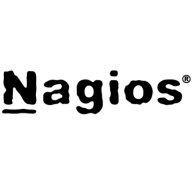

InfluxDB and Nagios Fusion compete in the data monitoring and management category. InfluxDB stands out with its efficient time-series data capabilities, whereas Nagios Fusion impresses with its comprehensive monitoring features.
Features: InfluxDB specializes in high-performance time-series data storage, offering real-time analytics and efficient querying, along with scalability and integration capabilities. Nagios Fusion provides a centralized view of multiple Nagios instances, detailed monitoring, and powerful visualization. It focuses on integrating various data points into a unified dashboard.
Room for Improvement: InfluxDB can improve by enhancing its visualization tools, increasing its out-of-the-box monitoring features, and expanding its integration with third-party services. Nagios Fusion could benefit from simplifying its initial setup, providing more comprehensive online support resources, and enhancing its user interface for a more intuitive experience.
Ease of Deployment and Customer Service: InfluxDB is known for straightforward deployment, aided by clear documentation and responsive support. Nagios Fusion involves a more complex deployment process, requiring significant customization, but offers centralized management benefits that provide long-term value.
Pricing and ROI: InfluxDB offers a competitive pricing model that reduces infrastructure costs, enhancing ROI through efficient data handling. Nagios Fusion involves a higher initial setup cost but offers robust monitoring features that may justify the expense for companies looking for extensive monitoring capabilities.
| Product | Market Share (%) |
|---|---|
| InfluxDB | 0.6% |
| Nagios Fusion | 0.3% |
| Other | 99.1% |

| Company Size | Count |
|---|---|
| Small Business | 4 |
| Midsize Enterprise | 3 |
| Large Enterprise | 6 |
InfluxDB is open-source software that helps developers and enterprises alike to collect, store, process, and visualize time series data and to build next-generation applications. InfluxDB provides monitoring and insight on IoT, application, system, container, and infrastructure quickly and easily without complexities or compromises in scale, speed, or productivity.
InfluxDB has become a popular insight system for unified metrics and events enabling the most demanding SLAs. InfluxDB is used in just about every type of industry across a wide range of use cases, including network monitoring, IoT monitoring, industrial IoT, and infrastructure and application monitoring.
InfluxDB offers its users:
InfluxDB Benefits
There are several benefits to using InfluxDB . Some of the biggest advantages the solution offers include:
Reviews from Real Users
InfluxDB stands out among its competitors for a number of reasons. Two major ones are its flexible integration options and its data aggregation feature.
Shalauddin Ahamad S., a software engineer at a tech services company, notes, “The most valuable features are aggregating the data and the integration with Grafana for monitoring.”
Nagios Enterprises delivers official products, services, and solutions for and around Nagios – the industry standard in enterprise-grade IT infrastructure monitoring. With millions of users worldwide, Nagios is the undisputed champion in the IT monitoring space. Our team of dedicated professionals works to ensure total customer satisfaction with all the services we provide. Our extensive network of partners helps extend Nagios services and solutions to new organizations and markets worldwide to meet a variety of business needs. Nagios Enterprises was founded in 2007 by Ethan Galstad. Ethan created what would later become known as Nagios in 1999, and currently serves as the President of Nagios Enterprises.
We monitor all IT Infrastructure Monitoring reviews to prevent fraudulent reviews and keep review quality high. We do not post reviews by company employees or direct competitors. We validate each review for authenticity via cross-reference with LinkedIn, and personal follow-up with the reviewer when necessary.